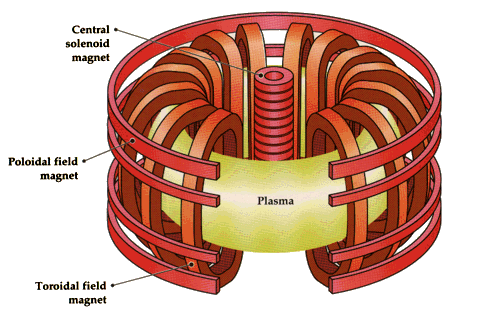
Problems with early power plants led to the development of the Tokamak. An old
design, known as the linear pinch method, suffered from large energy losses at
the ends of the plant and macroscopic plasma instabilities. To overcome these
problems, a new design was developed by Russian scientists that added a strong
magnetic field to "stiffen" the plasma. The new machine was called a Tokamak;
a Russian acronym made from the first syllables of the words torid kamera
(chamber), magnit (magnet) and the first letter of katushka (coil). The Tokamak
consists of a series of superconducting magnet coils around a toroidal vessel
that confine and control plasma and induce an electrical current through.
Fusion is created when the plasma is hot and dense enough, and is confined
long enough for the atoms to fuse together. In 1968, the T-3 Tokamak had an
energy confinement time of only several milliseconds, but this was still much
larger than anything that had been developed prior.

